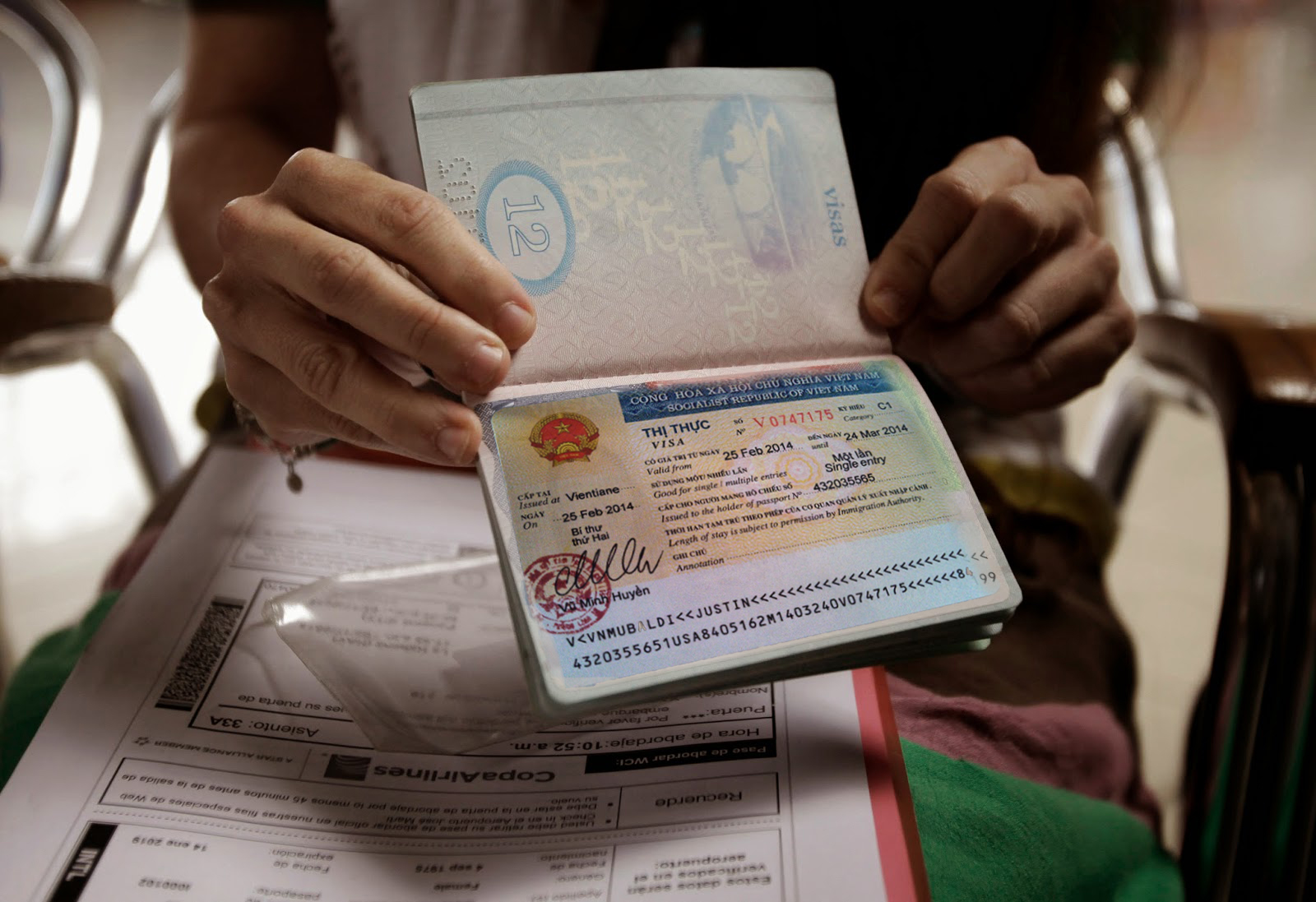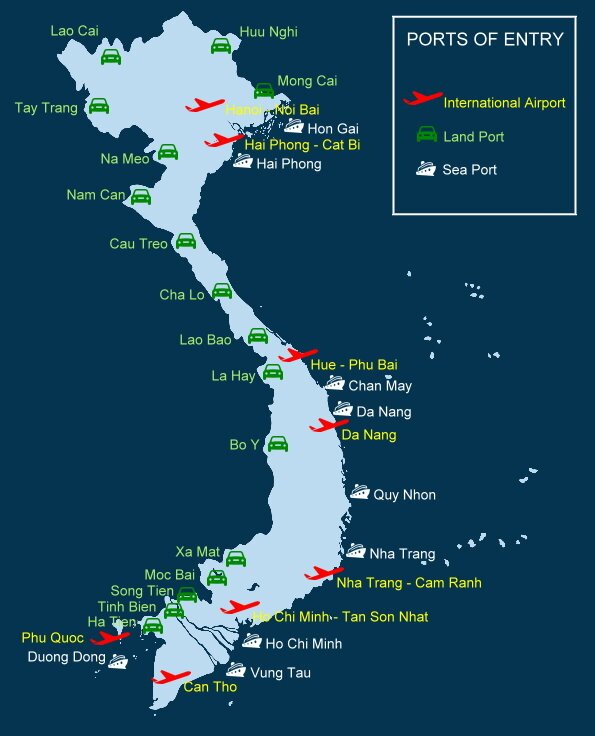Vietnam Visa On Arrival Common Mistakes and How to Avoid Them
While obtaining a Vietnam Visa on Arrival offers convenience, it still carries certain risks if applicants are not thoroughly prepared. In this article, SeniWorld will highlight some of the Vietnam Visa On Arrival common mistakes that applicants frequently encounter during the application process.
Vietnam Visa On Arrival Common Mistakes
To avoid unwanted problems, tourists should pay attention to the following common mistakes when applying for a Vietnam Visa On Arrival
Not applying for a visa before arriving in Vietnam
Travelers might incorrectly assume that they can apply for a visa upon arrival at the airport in Vietnam. However, Vietnam entry visas cannot be applied for directly at the airport. To be granted a visa on arrival, applicants must apply online in advance and receive a visa approval letter. The applicant can only proceed to collect the visa at the Vietnam International Airport after receiving the approval letter.
Providing incorrect information in the visa application form or not checking the visa approval letter carefully
One of the Vietnam Visa On Arrival common mistakes when applying is providing incorrect information on the visa application form or failing to carefully check the visa approval letter. Filling in important information such as full name, date of birth, passport number or date of entry incorrectly can lead to rejection of the application or problems at the airport. At the same time, if the visa approval letter is not carefully checked, errors in the information on the letter can cause difficulties in obtaining a visa upon arrival, leading to refusal to enter Vietnam.

Not preparing all required documents at the airport
When arriving in Vietnam, visitors need to prepare all necessary documents to receive a visa at the airport, including the original passport, visa approval letter, ID photo and visa fee in cash. If one of these documents is missing, visitors will not be able to complete the visa receiving procedure at the airport.
Mistakes about visa validity
The visa validity date is not the date of entry, but the date stated on the approval letter. This means that the visa will only be valid from the date of entry confirmed in the approval letter, not from the date of intended arrival.
Not keeping copies of important documents
Applicants should keep copies of their visa approval letter and other important documents such as passports, ID photos, and visa-related documents. This will help in emergency cases, especially in case of an incident or when having to present documents to the authorities.
Not understanding the regulations on the length of stay
Vietnam visa on arrival has clear time limits. Overstaying a visa will result in severe penalties, including fines or deportation from Vietnam. Travelers should check the validity of their visas and renew their visas promptly if necessary.
Not preparing for medical requirements
In some cases, visitors to Vietnam may be required to provide a health certificate, especially during a pandemic or when there are special medical requirements.
For example, COVID-19 test results if there are special medical regulations.
Choosing the wrong port of entry
Please note that a Vietnam visa on arrival is a type of visa only for visitors entering Vietnam by air. This means that if you enter Vietnam by land or sea, you cannot apply for this type of visa. In that case, you will need to contact the Vietnamese Embassy/Consulate abroad to apply for a visa.
This is an important point that visitors need to pay attention to if you want to apply for this type of visa. In any online visa application form of a reputable service provider, you will also see a mandatory field called “Airport of Entry”. When you fill in this information, it means that you have confirmed that you will come to Vietnam by air, and if you come to Vietnam by land or sea, you will not be refunded.

All in all, to avoid these common mistakes in the process of applying for a Vietnam Visa On Arrival, choosing a reputable visa agency is essential. This not only helps travelers save time but also minimizes the risk of unnecessary errors.
SeniWorld is one of the leading units providing Vietnam visa services, with a team of experienced experts and a transparent and fast working process. With SeniWorld, you can be completely assured of the accuracy and efficiency of the visa application, ensuring your trip goes smoothly and conveniently.
Frequently Asked Questions About Vietnam Visa On Arrival
What should I do if I forget my photo and printed copy of the entry letter when arriving in Vietnam?
Passport photo and printed copy of the entry letter are required to get a visa at the Vietnam airport. If you forget, you will have to pay an additional $2-5 for the photo and printing service at the airport.
Can I use the Vietnam Visa On Arrival to enter Vietnam by land or sea?
No. The entry visa to Vietnam issued at the airport is only valid for foreigners entering by air.
Can I enter Vietnam earlier than the date stated in the entry letter?
No. You can only enter Vietnam after the date stated in the approval letter, you cannot enter Vietnam earlier than that date. You should reapply for a new letter if you want to change your travel schedule.
Can I leave Vietnam later than the date stated in the entry letter?
No. You are allowed to leave Vietnam earlier than the departure date stated in the document, but cannot leave Vietnam later than that date. If you want to stay in Vietnam longer, you must extend your Vietnam visa.
Conclusion
To avoid common mistakes when applying for a Vietnam visa, it is extremely important to carefully check the information in the application form, confirm the visa approval letter, and prepare all the necessary documents. Visitors need to pay attention to small but essential details to ensure the entry process goes smoothly and without any problems. Choosing a reputable visa service provider like SeniWorld will help you complete the visa procedure quickly and accurately. Always be well prepared to make your trip to Vietnam easier and more convenient.
